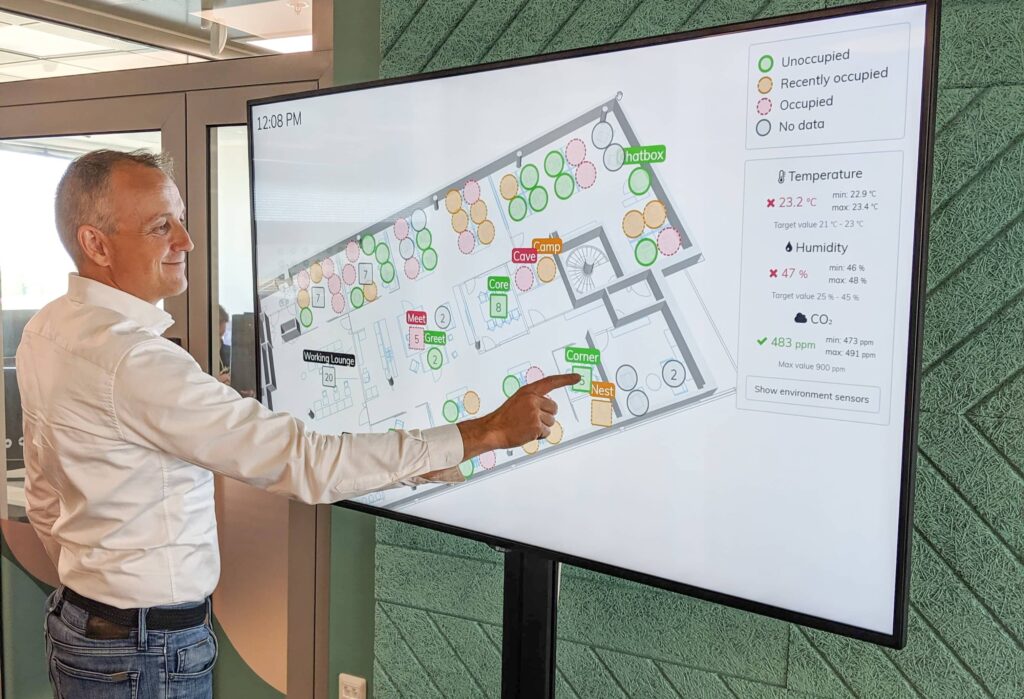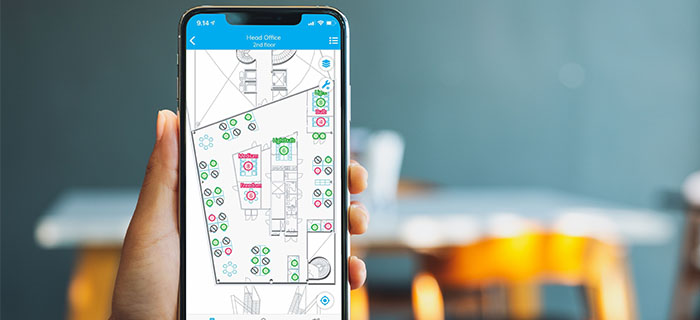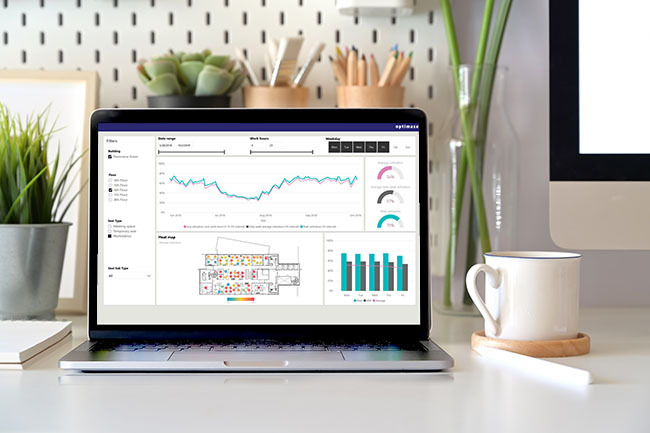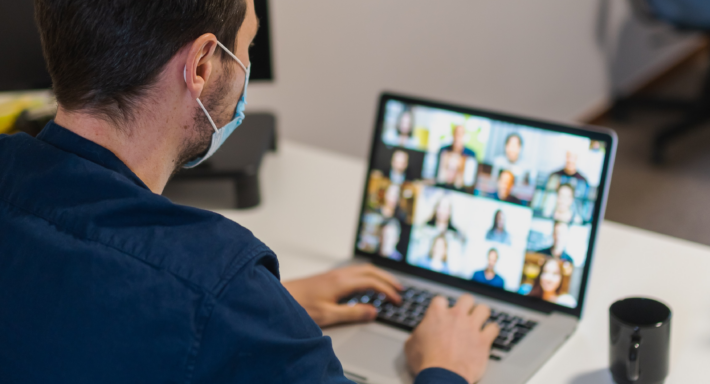"How do we get started with hybrid working?" and "When can we go back to work, back to the office, back to business as usual?" These questions are on the lips of many. While many are (and have been) eager to see restrictions lifted, we must remain patient, and this time around – think and plan ahead. One step and stage at a time – the social, physical and digital workplace need to realign with a new way of working.
At the time of initially writing this in late April 2020, we were a few months into the 2020 pandemic – and the subsequent global economic, political and social crisis – and half the world was under some form or another of lockdown to slow the spread of COVID-19. The blogosphere has quickly filled up with various advice for remote work beginners on how to survive working from home, to help the large numbers of employees and employers – who were caught off guard and unprepared – to cope.
While remote working, teleworking, working from home, and flexible working arrangements have been around for decades in certain organizations, it has still largely been seen as the privilege of a few and not the norm. Therefore, vast numbers of companies had to mobilize quickly in order to set up remote working policies, technology, trainings, insurances and remote working agreements to name a few. No doubt, many of those who are new to remote working are experiencing many pain points, which experienced all at once, are surely overwhelming.

Phase One: "The global remote working pilot program"
If you are familiar with John Kotter's Eight Step Model for Leading Change, it all starts with creation of a sense of urgency, which alerts the organization that change must occur. This has been a challenge for many workplace change projects in the past, meeting resistance by middle management against remote work policies from fear of loss of control. But this time, things have been different, thanks to the pandemic and subsequent response.
The learning curve has been painful and steep for many, as teachers have had to learn to teach remotely, students have needed to study from home, while their parents struggle to juggle online meetings and remote working with cooking, cleaning, helping their children with homework and shop for their own parents belonging to self-isolated risk groups. On top of all this, comes naturally all the anxiety in connection to staying healthy, personal future economic security and the establishment of new routines and behaviors – not to mention getting along with everyone within the same four walls 24/7. The change has undoubtedly been painful for many, and this unprecedented "remote working pilot" on a global scale, has sparked the interests of many experts within the field to conduct surveys, to gain understanding on how they could be of help implementing better remote working capabilities in the future.
While the closedown of schools, universities, museums, restaurants, shops, event spaces and other public spaces is still on-going in many places of the world, and white collar workers have been sent home from the office to work, the discussion of "returning back to normal", and "back to the office" has started very quickly already in April-May of 2020. This reflection and preparation is a good thing, as at this stage it is the time to learn from the experience of having been caught off guard, and learn from what already is being done in eg. Asia, where countries have gradually been opening up successfully. It would be unwise to follow up an uncontrolled remote working stint with an unplanned and uncontrolled return back to the office – and so we need to start preparing a gradual process for the future in good time. With the pandemic still out there and while we are still all working from home, we can use this time wisely.

Phase Two: Preparing for a gradual return to the office
Before vaccines have been made widely available to everyone, to provide adequate protection, the health and safety focus will be on other methods. Without a proper plan in place, a return back to working 'pre-Covid-style' will be filled with risks. And in all likelihood, going back to the way things were, commuting into the office by default, will simply not be possible for most organizations. The health and safety of employees and their loved ones, whether in a risk group or not, need to be front and center of any plan going forward. As it is hard to predict the future both on the time scale, and factors to take into account it is good to prepare for different scenarios. There is professional help available to plan and prepare, so don't skip this part just because it may feel overwhelming to get at it alone.
Planning a ramp-up, in stages, that allows access to the office to people in stages may be a tactic. It can partly be based on the overall pandemic situation and regulations placed by society, and in part based on the necessity to have access to the office. People within service jobs, production and logistics whose work is directly bound to place (or tools & materials at a location) could be invited in first, on a need-to basis. Soon thereafter, work tasks that require certain data security standards to be met by the workplace and sensitivity of information, can be allowed access. Based on people's work and mobility profiles, you can begin allowing access to an ergonomically better work environment to anchors (60-100%, deskbound individual work), flex workers (40-60% time use at the office) and mobile workers – in that order. In order to ensure social distancing and lower density, you can consider inviting teams into the office on different days of the week, by limiting access to 2- to 4 -day workweeks at the office. However, for many organizations the concept of "team" is way too fluid to make this type of rigid arrangement work well in practice, and I'll return to this a bit later

Re-think risks, the environment, policies and human behavior
The keyword here is "invite", as there will be a significant number of workers who still do not have immunity and/or belong to a risk group, and thus should have the option to remain working from home from this day on, until vaccinations have been made available. Plus, many healthy individuals will still need to care for loved ones in self-isolation, and possibly continue home schooling and have other responsibilities to balance work with.
Assuming that a) the various government restrictions are gradually lifted (at least for the time being, until a possible second wave), and b) that there will be workplaces to go back to, and c) employers decide to invite employees to use the office again – there will still remain both the real and perceived questions and fears of whether it will be safe to do so. Does the 'herd immunity hypothesis' hold true for this virus, even if everyone who has been offered a vaccine takes it, and has it built up enough? Has there been enough testing of immunity and has a vaccine that works been developed, are just some of the questions on the minds of many. Even so, will these facts, statistics and probabilities be enough for employees and their loved ones to be and feel safe – especially those belonging to or living with the most vulnerable risk groups?
Building trust in the workplace with open real-time communication
Even if organizations will be opening up again for business, we are going to need to change our behaviors for the unforeseeable future, most likely permanently. Preventive measures in both the physical and digital spaces as well as in services such as security, maintenance and intensified cleaning need to be in place in workplaces, schools and other places where it's essential for people to go even after lockdowns are lifted. Workers need to be fully educated, engaged and empowered to adjust to the "new norm", both at the office and at home.
New habits such as physical distancing, contactless greetings and handwashing will likely stay in place, possibly with increased use of facemasks and use of hand sanitizers. The need to meet face-to-face will need to be re-evaluated, and non-essential business travel will need to be clearly defined and discouraged. Contamination risks of the workplace by external visitors need to be managed and perhaps discouraged, such as visits by clients, partners and vendors, sales reps and delivery personnel wanting to enter the building. With a steep decline in physical meetings and events, business travel will diminish in any case – which will increase the demand for online meetings even more, and thus appropriate space to keep them in with technologies to support it. More and more employees are hoping to work more flexibly and at the office only 2-3 days a week. On top of this all, a growing interest in 4-day / 35-hour work weeks, is setting us up for even less time spent at the head office.
Smart offices connect the digital, physical and social workplace
As mentioned earlier, a top-down coordinated approach to a gradual reopening of the office and access to it, may result in suboptimal employee experiences. In stead, organizations can consider offering bottom-up solutions, by providing "office access on-demand" through digital room and desk booking tools, that limit the available seating and capacity at any given time and stage of the pandemic.
Real-time, shareable and actionable environment data is key for building trust through transparency and a sense of control. An easy-to-use interface, with digital visualization of spaces and their live occupancy status and air quality information will be essential for communication and a feeling of safety. Smart office solutions can help avoid congestion, and help improve hygiene and cleaning for shared spaces, and give employees a 2-way communication channel to voice their concerns or communicate needed fixes in a space.
Solutions with occupancy sensor data and pre-booking features can help avoid the office at peak hours, with digital floor plans to visualize which desks and spaces are in use or have recently been used (eg. within the last 2h or that same day). This way people can avoid recently used (uncleaned) desks – while cleaners can see which seats and areas need more intense cleaning at the end of each day. A mandatory "check-in" policy, with a capability to book a seat for the day (before leaving home) can help manage congestions and avoid unnecessary commutes. It will help avoid sharing of desks, manage density, congestion and peak occupancy pre-emptively.

Phase Three: Flexible working and a gradual reopen – piloting "hybrid"
Once vaccines are made available, a shift and balancing act will begin to take place. There will likely not be a sudden opening up of floodgates, with everyone going back to the office as before. Instead, in 'phase 3', organizations will gradually need to move to a model somewhere in between home and office – that allows for individual choice and tailoring based on the individual circumstances, abilities, needs and preferences. It is called flexible working, now also loosely called "the new norm" or "hybrid working" by some. Even though new to some, many of these adjustments in workplace strategies (eg. flex work, "anywhere-anytime working") and office designs (activity-based offices) have already been tried and tested- and are essentially just more wide spread adoptions of real estate and work culture trends that existed long before the pandemic.
There are many challenges that will greatly affect a plan for getting back to working at the office, and the ability to do so. These include:
- Health and safety: The actual risk of the disease itself, versus the availability of vaccines and immunity testing, cleanliness procedures at work and human behavior, structural space changes (especially for open offices) and rethinking bottle necks such as people flows in elevators.
- Psychological safety: Handling of fears and the traumas from the pandemic, the social scars and perceived risks, regaining of trust between people and the environment using frequent communication and technologies that provide real-time data.
- The economy and business: Cost cutting realities, efficiency demands of space use balanced while having a rethink on more resilient real estate strategies – such as supporting working from home with ergonomic desks, chairs and extra screens over inefficient leasing of office space.
- New habit and culture formation: Fostering a desire by leaders and employees to continue leveraging the remote working experiment phase, and to shift work culture toward more flexibility and choice, including the option to attend meetings remotely.
- Optimizing the workplace experience: While remote working is possible to do under temporary circumstances, there are a great number of workers who's work eventually requires a proper office environment. Reasons include a need to collaborate and innovate, use special equipment, find a place to focus, and to build relationships – or simply 'get out of the house' for a while.
This will be an excellent, however exceptional, time to use for measuring the effects of flexible working and the consequent space utilization. Some office occupiers are actually using space utilization sensor data during the lock-downs. They want to understand their bare minimum or baseline space requirements, in an extreme remote work scenario. However, the best outcomes will emerge during "stage three": the period of "the world's widest flex work experiment", when people will gradually and only partly return to the office after working from home full-time, even after having been offered vaccines and restrictions being lifted.
It is at this stage at the latest, companies will need to form and communicate a vision for what work will look like going forward – and good examples should be studied far and wide, eg. from the Nordic countries which consistently rank highest in happiness, and where the effects of the pandemic on worklife had less negative effects than elsewhere in the world – thanks to the resilience that flexible working provides to all stakeholders.

Phase Four: Long-term flexibility and resilient real estate strategies
What then to do with lease agreements, increasingly empty or distributed office spaces, and fixed overhead costs? The world economy impacted by the pandemic could very well lead to a long-term downturn, forcing many employers to cut costs to survive. Even if remote work and flex work may be less than optimal for many employees, their teams and supervisors – companies will try to reduce their long-term rent obligations and fixed costs by encouraging workers to work from home or other location, rather than let go of their human capital. Those people who are still employed, will now frequently work from home, while more employers will opt to downsize their long-term leases and supplement them with flexible office spaces and coworking memberships as needed, enabling people to commute less and work more locally, closer to home. However, this will not mean that the total amount of office spaces will diminish. It may just become more distributed, less dense, leased and accessed through new models. This remains to be seen. What the real estate impacts and needs for workspaces in the post-pandemic era will be, is a topic I will not make any final predictions on, nor make recommendations for. The only thing certain is that the future remains uncertain, and that it will be wise to build up resiliency in all strategies – including real estate.
A unique opportunity to experiment, study and learn
Fewer employees may be coming into the office creating underused space, possibly due to an increase in flex work and working from home, or sadly, due to layoffs. This creates a savings potential in real estate costs that so many companies these days need to recognize. The amount of waste, and the potential was already apparent long before Covid-19 and the forced work-from-home experiment came along. You can download the free Optimaze Workplace Review report with data from over 2300 workplace studies from 20 countries, and see for yourself. The report focuses on flex work and future-proofing workplaces – also from a sustainability point-of-view.
A functioning work environment and a great workplace experience is a competitive factor that increases your company's productivity and employee well-being. Workplace professionals like you, strive to make resilient real estate decisions, save on costs and reduce the carbon footprint by optimizing space use.
If there was ever a good time to measure space utilization for optimizing space, it would be when the entire organization is engaged in practicing flex work, invited to come into the office as their work, health, needs and other considerations permit. Over a period of several months, going back to the office after full-time from remote work, is a great opportunity for workplace developers to simulate and study flex working live, for an entire organization – as if it were the new norm. It is also the perfect time to collect data, and measure the impacts of a scenario where flex work culture will remain as the new norm. For most, it probably will.
So get strategic. Future-proof your workplace. Build resilience in both your culture, and your real estate strategy. Now is the time to leverage "the flex work phase" of a gradual re-occupation of the office – and to measure your use of, and actual need for space.
